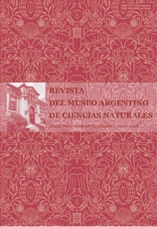Selección y uso de los recursos madereros en cazadores-recolectores de la transición Pleistoceno-Holoceno y Holoceno medio, sierras de Tandilia oriental, Argentina
Resumen
This paper analyses the anthracological records founded in six archeological sites with chronologies in Pleistocene–Holocene transition (9570 ±150–10,465 ± 65 years BP) and middle Holocene (5089 ± 40–6654 ± 42 years BP) located in the eastern Tandilia range, Buenos Aires province, Argentina. The archaeological charcoals were used to infer the use of forest resources as a sign of human selection, floristic characterization and the environmental conditions during this period. The charcoal assemblages identified for Pleistocene–Holocene transition was: Celtis tala (Cannabaceae), Salix humboldtiana (Salicaceae), Baccharis sp. and Senecio sp. (Asteraceae). While for the middle Holocene were recorded: Celtis tala, Baccharis sp., Colletia sp. (Rhamnaceae) and Schinus sp. (Anacardiaceae). Colletia sp., Baccharis sp. and Celtis tala have high caloric values and long combustible duration and were an excellent source of heat and were probably used by hunter-gatherers for heating, cooking and lighting. The record of Celtis tala in three archaeological sites during the Pleistocene–Holocene transition indicates the presence of xerophytic forests at least from the ca. 10,000 years BP in the eastern Tandilia range. The vegetation developed under a cold arid to semi-arid climate.
Palabras clave
anthracological
Texto completo:
PDFEnlaces refback
- No hay ningún enlace refback.

This work is licensed under a Creative Commons Attribution 3.0 License.

